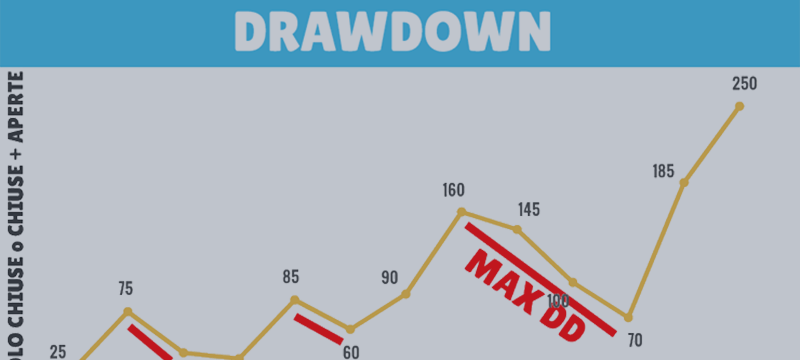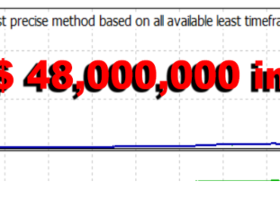
The complementary element to the Equity Line, which extends the opportunity
of analysis, is the drawdown.
In simple terms, the drawdown is the loss of activity of Trading, or rather the
level of losses incurred before returning to generate profits.
Observing a normal Equity Line, which has moments of rise and fall times, the
drawdown are all those descents which then have followed the new climbs, with
new highs in the scale of profits.
How many losses
has had to bear the Trader before being able to generate new maximum profit?
"
This is the question to which the Drawdown respond accurately.
The Drawdown can be expressed in two ways:
You can consider the losses in absolute terms, such as
money or pips
or in terms of percentage.
The percentages
help us in what is the analysis of the actual trading of the Signal Provider's
strategy skills, while the absolute values of money or pips will help mainly in
the construction process of our portfolio. Both factors contribute in any case
to support the decision taken with respect to money management, as discussed
specifically in the next lesson.
In our view the Drawdown percentage must always be calculated in two ways, or
rather, taking two different references. Once you have identified a drawdown, you
can calculate how much percentage is compared to the total accumulated profits,
both with respect to the amount of the achieved profits before the Drawdown
itself he began. Both values are very important, and can show this aspect of
the performance of traders from two different angles.
The percentages help to observe the Drawdown There also interesting from another point of view. If a Signal Provider loses 50% of its pips, in order to return at least break even, will not produce a new performance by 50%, but 100%. Yes, because if losing 50% has halved its gains, so it is with half the capital. To make sure that the one half back to being a whole will have to double it strength, so do a 100% performance. It must therefore always be careful, because the higher the drawdown is more difficult to recover the profits.
the classic
Drawdown is based on losses in the classic Equity, caused by the sun and closed
positions accounted for, while what includes open positions calculates what the
bill actually declined in terms of capital, against all open positions.
Both ways can give directions, but as you can image the more interest you have
to give it to the Drawdown including open positions, because this way we can
really look at the risks that are incurred. Each operation, before being
closed, oscillates. To calculate the possible risks I need to know what has
been profound swing downward, and to know then what was the swing down the
entire account, considering the sum of all open trades at any given time or day
.
Beyond all the
ways it can be represented, the value that most interested us will be Max
Drawdown, or the maximum reduction in the capital before returning to create a
new high profit.
Other values that can be also be very useful and the Middle Drawdown Drawdown
of frequency, or how often they occur.


